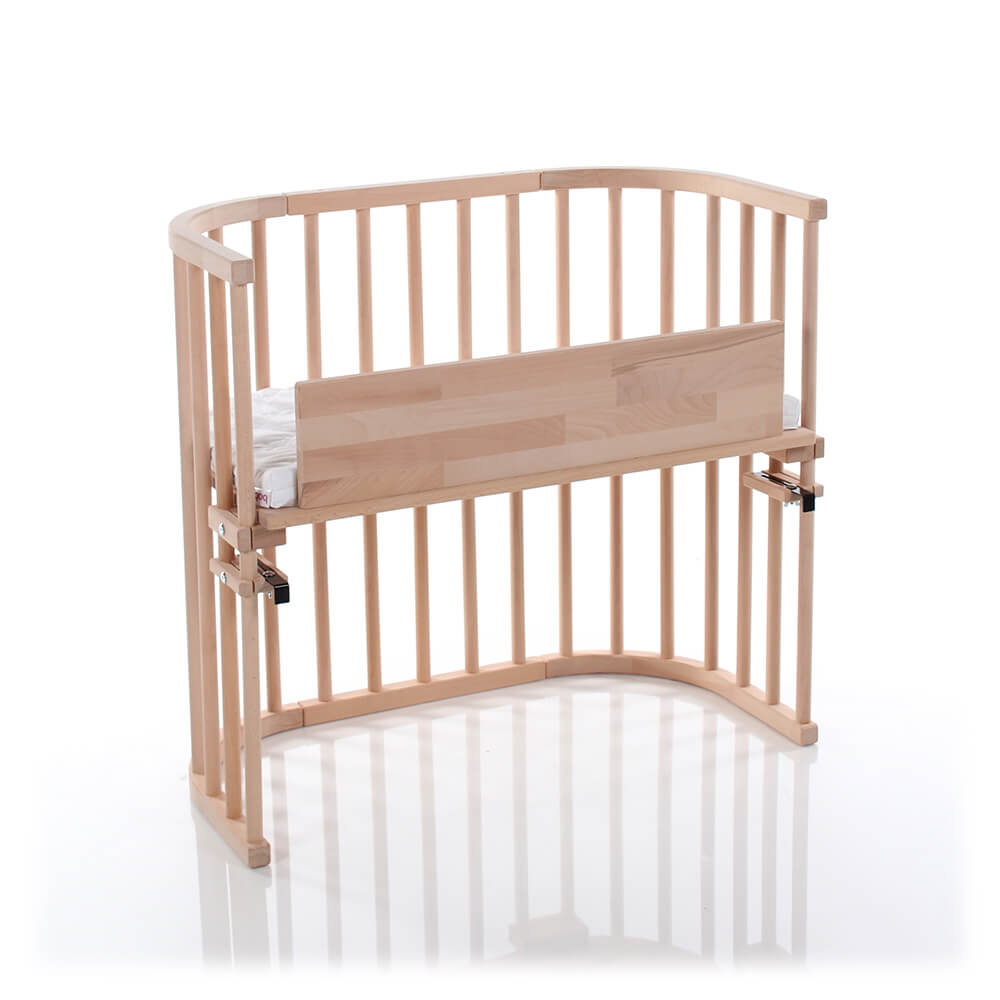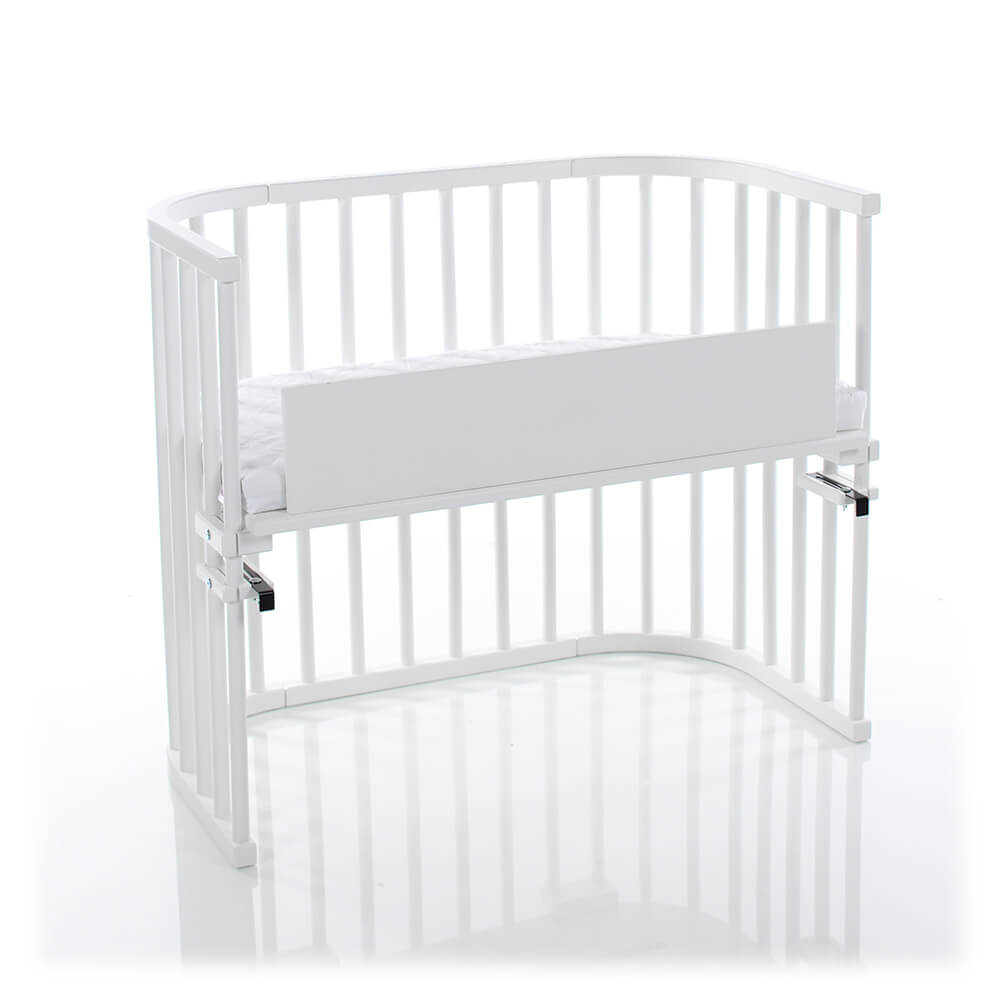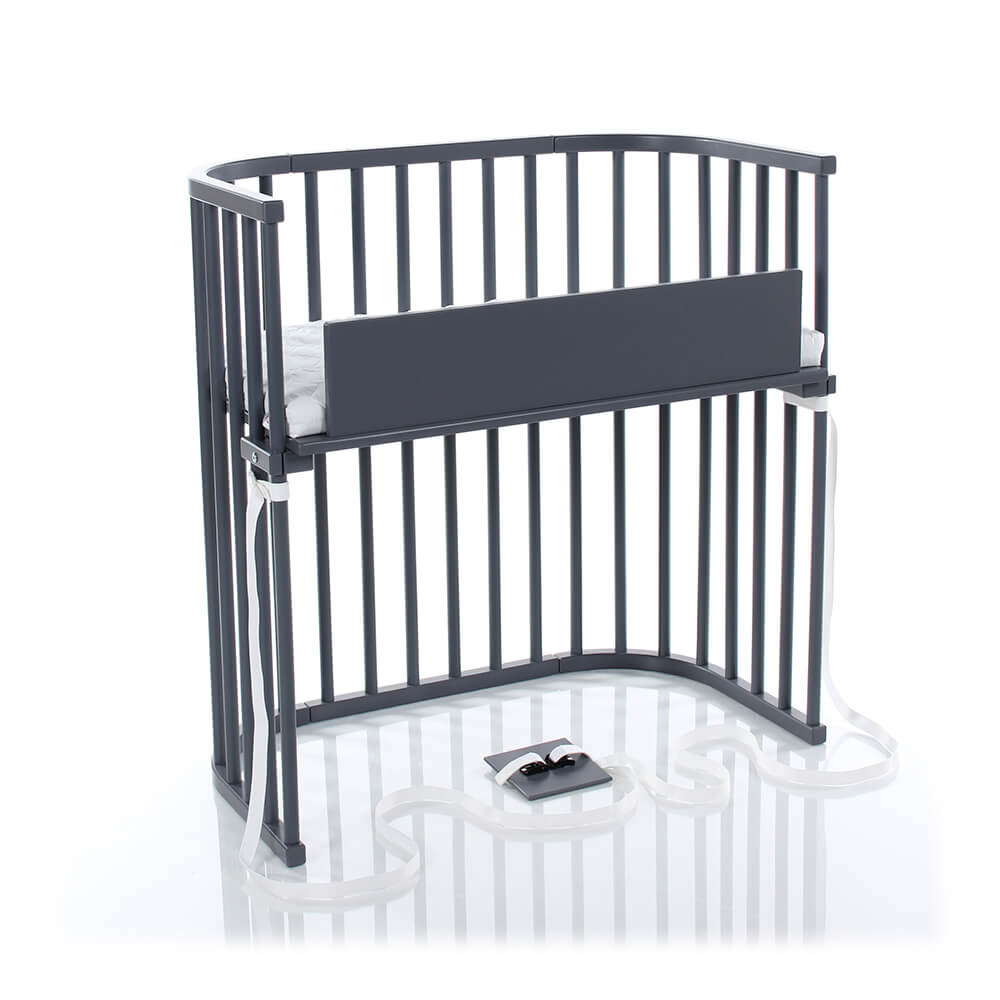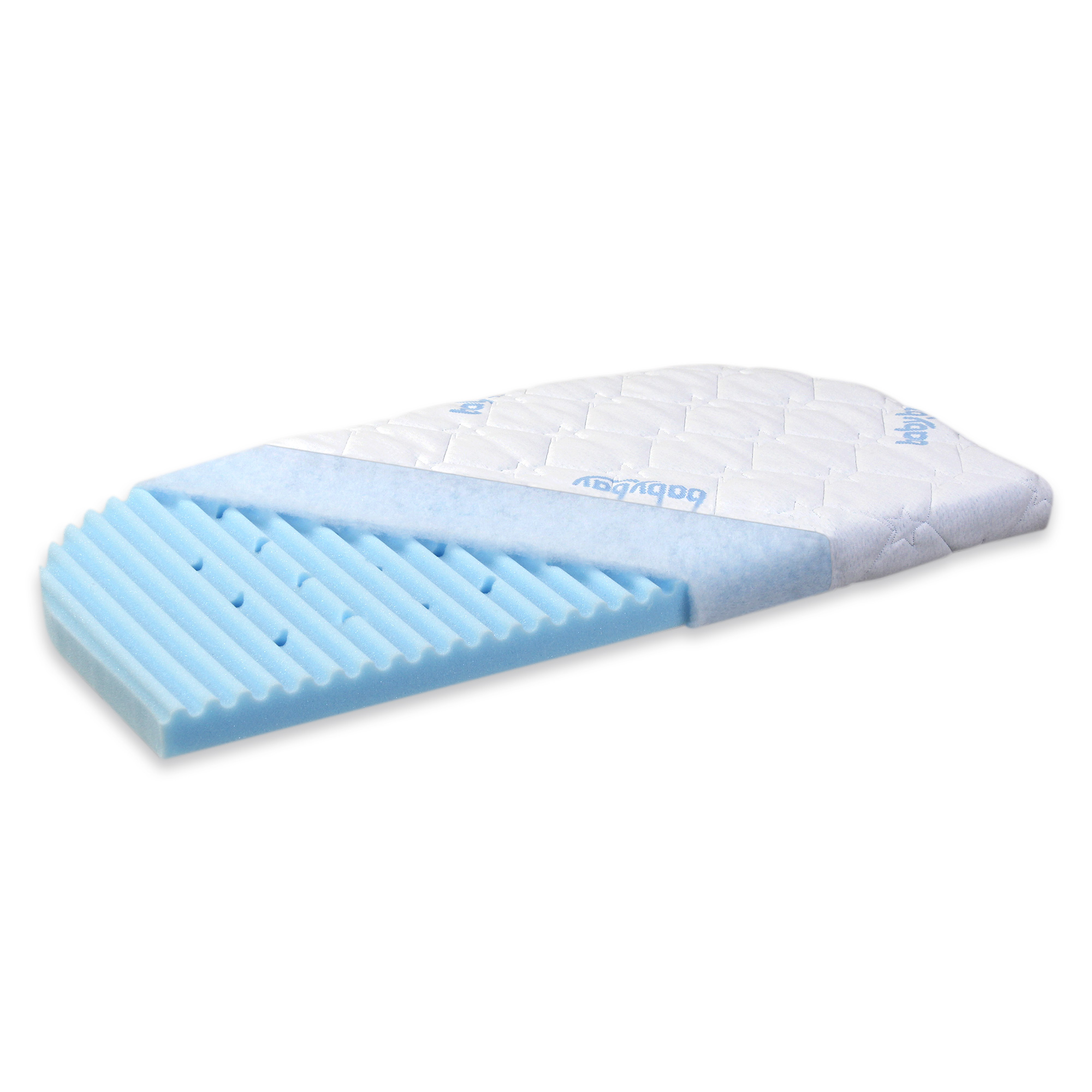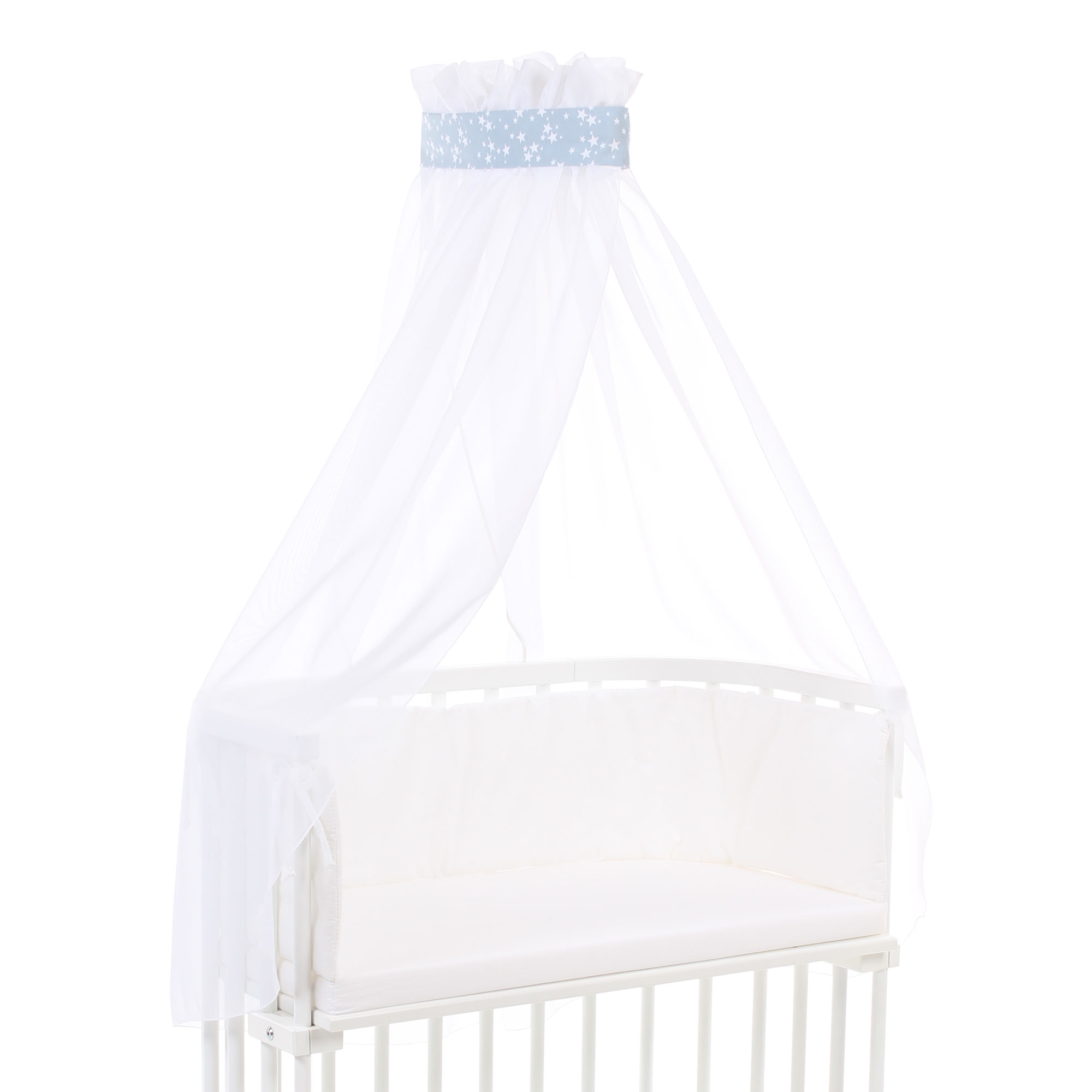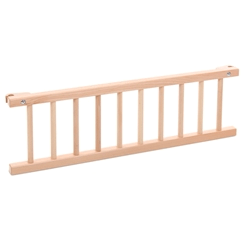When it comes to making a co-sleeper safe, not every option on the market puts an equal emphasis on meeting (and then exceeding!) crib safety standards.
Believe it or not, crib safety standards the way we know them now didn’t even come into effect until 2011. (That’s why you’ll see plenty of people, including representatives from the Consumer Product Safety Commission — aka: the group in the US government responsible for looking out for the interests of consumers — warning about the dangers of repurposing antique cribs.)
And while some crib and co-sleeper manufacturers had to rush to keep up with the new standards, others had been looking ahead to best support the safety needs of babies from the beginning.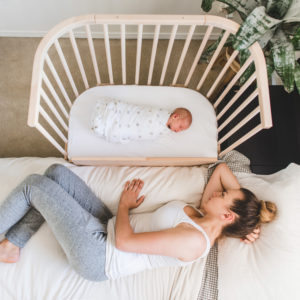
That’s why choosing a bedside co-sleeper (or any baby crib or bedside sleep tool for that matter!) isn’t as simple as looking online, seeking out your favorite colors, and hunting around for something that will perfectly match your bedroom decor. (The way you would when getting a new lamp, bed frame, or other piece of furniture.)
We’re about to break down everything you need to know about sleeping with a bedside co-sleeper. Including the need-to-know secrets behind why they’re a sleep option that so many parents love. Along the way, we’ll also show you how to choose the baby sleep tool that’s safest for your little one.
What Do I Need to Know About Co-Sleeping Before Buying a Bedside Sleeper?
Before there were cribs for babies to sleep in, there was family co-sleeping.
Co-sleeping has long been the most favored sleep practice in the world. It’s practiced by a majority of families in countries like Sweden and Japan. And upon doing a comprehensive study, one anthropologist found it to be the go-to sleep set-up for almost 70% of children living around the world.
It’s clear that co-sleeping is loved by millions of families worldwide: and that’s for good reason! Dr. James J. McKenna — the founder and director of the Mother-Baby Behavioral Sleep Laboratory at the University of Notre Dame — discovered that babies who co-sleep have an easier time breathing more regularly. They also experience less stress (along with a host of other well-documented co-sleeping benefits!).
But You Should Know: Co-Sleeping with a Bedside Sleeper Is Not the Same As Bed Sharing
Using a bedside sleeper and participating in bed sharing: these are two very different practices, though they often end up being grouped under the same “co-sleeping” umbrella. 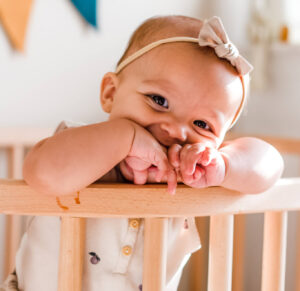
In bed sharing, you invite your baby to share your bed and your mattress for the night. When using a co-sleeper, you sleep with your baby by your side: while keeping them snug in a safe sleep space made just for them.
Organizations like the American Academy of Pediatrics encourages parents to keep their baby sleeping a made-just-for-them sleep space separate from the mattress of their own bed. That’s because the super-soft mattresses and bedding sets that most parents prefer aren’t designed to support your baby in the way they need. Which can lead to unexpected risks — or nights spent tossing and turning while worrying about your baby’s safety.
And while sleeping with these super-soft comfort items can put your baby at risk of rolling over or being covered during the night, safe co-sleeping options (like a safely-engineered bedside sleeper) will make sure your baby has a secure and nurturing place to rest through the night. While giving you the comfort of being close to them all night long.
Not All Bedside Co-Sleepers Are Created Equal: Here’s What You Should Know
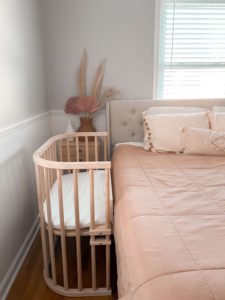
When it comes to buying a bedside co-sleeper, there are two important things to consider: design and manufacturing care.
When it comes to design, you want to look for a bedside sleeper that fits securely by your bedside without any gaps between your mattress and your baby’s sleep space. (Because gaps = spaces where your baby can easily become trapped.)
You’ll also want to find a sleeper that is thoughtfully designed to provide your baby comfort in more ways than one. The babybay co-sleeper, for instance, is engineered in the nurturing shape of a hug so your baby feels snugly cradled all night long (which means no slips, trips, or unexpected roll-overs at the end of the day).
This shape helps your little one catch their Zs in comfort. While still being supported by the necessary safety that comes from having a co-sleeper that fits tightly against the bed.
But design isn’t the only thing that matters. Just because you’ve chosen a thoughtfully engineered design doesn’t mean that all aspects of your chosen co-sleeper have been built with care.
That’s why the manufacturing care of your chosen co-sleeper is just as important as the design that defines it.
Baby Safety Standards & How to Ensure True Safety While Co-Sleeping
Not every crib manufacturer is as concerned about your baby’s safety as you are.
Many baby cribs are made with the kind of toxic glues, chemicals, and other harmful materials that can be unsafe for your little one. 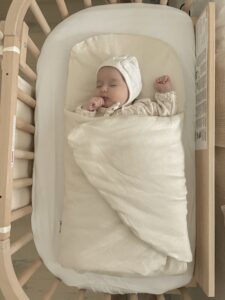
In fact, a team of researchers discovered that the foam padding you find in many baby mattresses release significant amounts of VOCs (or volatile organic compounds) that are potentially harmful to your baby.
Most shocking of all, these researchers found that new crib mattresses release almost 4 times the amount of VOCs released by old crib mattresses. Not only that, but your baby can up the amount of emissions released: just with their body heat.
These emissions also happen to be strongest in the area of the crib mattress where your baby breathes, making it near-impossible for your little one to fully avoid exposure.
Of the 30 VOCs these researchers identified in the crib mattresses they tested—including formaldehyde, benzene, toluene, and acetone — many can be found in other parts of your baby’s crib as well (like the crib frames they sleep beside).
From cheap plywoods to coated toxic glues, not all crib manufacturers are committed to totally avoiding VOCs — and ensuring your baby has safe co sleeping nights with no concerns on the mind.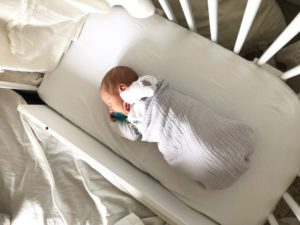
So Then What’s the Best Bedside Co-Sleeper Out There?
Only you know what safe sleep tool will perfectly support the needs of your family. But since 2003, babybay co-sleepers have been loved by parents looking to give their little ones safe nights of sleep with all of the co-sleeping benefits and none of the risks.
These co-sleepers are known for being a non-toxic, eco-friendly, and all-natural way for your little one to get rest. With a thoughtfully engineered frame that is made from 100% ethically sourced beechwood.
Whether you’re just beginning your co sleeping journey or have enjoyed the practice of co-sleeping with a child before, baby’s bedside co-sleepers offer you and your little one sound nights of sleep. With a co-sleeper safe option that gives full peace of mind.

